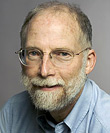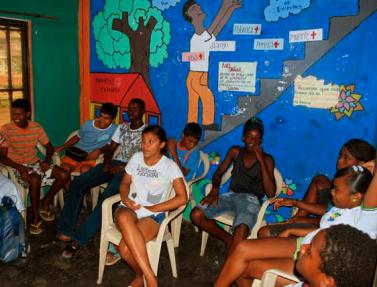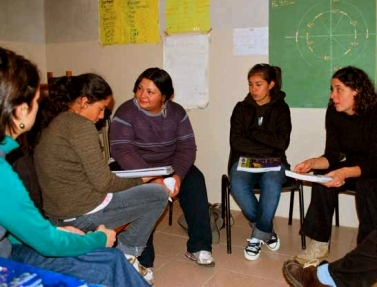reprinted with permission from Cornell Chronicle, Feb 2, 2011
Growing up poor increases a person's chances of health problems as an adult, but a new Cornell study shows that being raised in a tight-knit community can help offset this disadvantage of poverty.
Poor adolescents who live in communities with more social cohesiveness are less likely to smoke and be obese, reports the study, published in January's Psychological Science journal.
Environmental psychologist Gary W. Evans, a professor of design and environmental analysis and of human development in Cornell's College of Human Ecology, recruited 326 rural upstate New York children when they were about 9 years old and their mothers. About half of the children lived in or near poverty; the rest were from middle-income families. Periodically, Evans and co-author Rachel Kutcher '08 visited the participants to measure their health and exposure to various risk factors.
When the participants were about 17 years old, they and their mothers filled out surveys that assessed how connected their communities were and how much social control they felt they had. For example, mothers were asked to say how much they agreed that "one of my neighbors would do something if they saw someone trying to sell drugs to a child or youth in plain sight"; the teenagers were asked whether they had adults whom they could ask for advice. The teens also completed surveys on behavior, including smoking, and had their height and weight measured.
"Youth from low-income backgrounds smoked more than those who grew up in more affluent homes," the study concludes. However, if they lived in connected communities, "the effects of early childhood poverty on adolescent smoking were minimal."
Evans found similar results when assessing the teens' body-mass index, a standard measure of obesity.
"You may be able to loosen those connections between early childhood poverty and negative health outcomes if you live in a community with good social resources," Evans said (see sidebar for more on childhood poverty and obesity).
Evans and Kutcher believe adolescents in communities with more so-called social capital may have better role models or mentors; or perhaps in a more empowered community, where people feel comfortable stopping someone else's bad behavior, the young people feel less helpless as individuals. They might believe that "you have some control over what's going to happen to you," they suggested.
Still, the authors warned, social capital can help poor youths, but it is not a remedy for the health problems associated with impoverished living in childhood. Poor adolescents, even those in communities with more social capital, are still less healthy than their middle-income peers.
"It's not correct to conclude that, if you just improve social capital, then it would be okay to be poor," Evans says.
The work was funded by the W.T. Grant Foundation and the John D. and Catherine T. MacArthur Foundation Network on Socioeconomics Status and Health.
Poor diet and lack of exercise aren't the only risk factors for childhood obesity, report Cornell researchers. So too are low-income environments, which are fraught with more family turmoil, violence, noise, crowding and lower housing quality.
The researchers found that poor children gained weight more rapidly during childhood into early adulthood than children from middle-income families. In further examining the link between childhood poverty and body mass index, they found that it was risk exposure that accounted for the increased weight gain by the youth in poverty.
Researchers have long been aware of a link between poverty and obesity -- the poor suffer from higher levels of obesity and early childhood poverty is more strongly linked to adult obesity than current income.
But, "Our research shows that exposure to multiple risks, which are common in low-income environments, plays a critical role in setting children on a life course trajectory for obesity," said Nancy Wells, professor of design and environmental analysis and lead author of the study published in the American Journal of Public Health (100:12).
The researchers -- who also included Anna Beavis '07 and assistant professor Anthony Ong -- analyzed the relationships between obesity, childhood poverty and cumulative risk exposure in 326 children in rural upstate New York; the youngsters and their mothers were interviewed when the youths were 9, 13 and 17 years old. About half the group lived at or below the federal poverty line at initial recruitment. Poverty level, height and weight, and exposure to risk were measured.
"Poorer children become overweight adults, at least in part, because they face a greater array of risk factors over the course of their childhood," says co-author Professor Gary Evans. "The next step is to look more closely at how and why multiple risk exposure leads to obesity and when we better understand this, what can we do about it."
-- Karene Booker, extension support specialist in the Department of Human Development

















